Introduction
This report presents an analysis of seven different kinds of paints. The assessment was aimed at the selection of the most suitable paint for branding highway centerlines and lanes. The types of paints assessed are from six different manufacturers. The paints assessment was based on three characteristics. These include: Spraying characteristics, drying time, and visibility. Visibility was measured after three months and after six months.
Scope of work
As earlier stated, the purpose of this inspection was to assess and identify the most suitable paint for use in marking highway centerlines and lanes. White paint and yellow paints for each brand were assessed. To achieve this, Highway 17 (concrete surface) and highway 43 (asphalt surface) were used.PMA-02-28H paint manufacturing specifications and ASTM D-711 were used to gauge spraying characteristics and paint’s drying time respectively. The visibility rating was based on guidelines provided on the figure below.
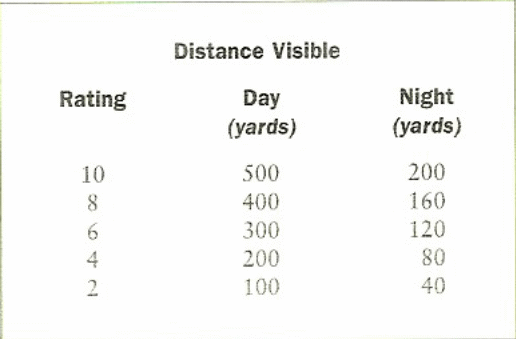
Method of Testing
Testing has begun with the collection of samples of white and yellow paints from the six manufacturers for purposes of evaluation. The obtained samples were then coded as shown on Figure 2. To eliminate biased analysis, the coding list was sealed in an envelope and deposited at a local bank. Two regularly traveled highway stretches earlier mentioned were then painted with sample stripes.
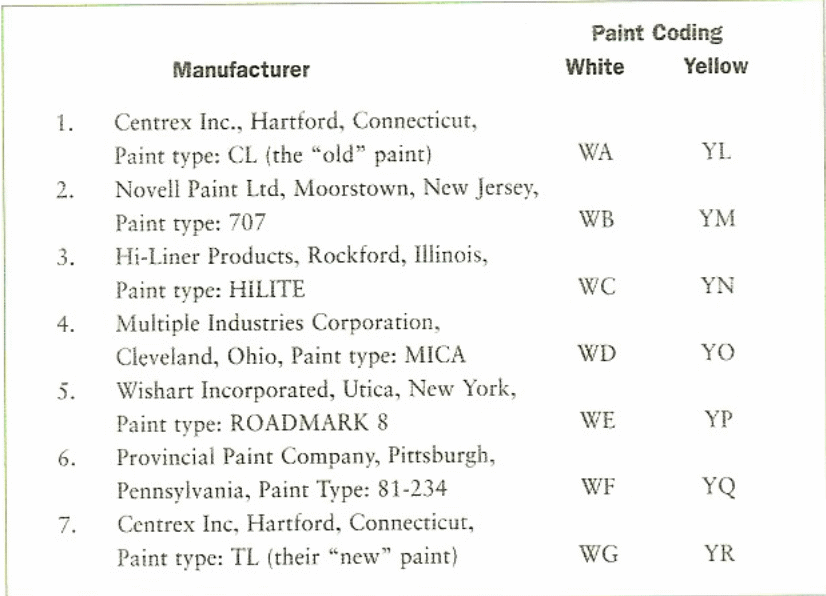
The assessment was done based on three characteristics as earlier mentioned. Spraying characteristics were assessed during application based on a 4-point Likert scale ranging from excellent to poor while the drying time was measured in minutes. Visibility was measured after three months and after six months.
Testing protocol
Based on Paint Manufacturers’ Association specification PMA-02-2811, the spraying characteristics for fast drying highway should be at least “good” and preferably “very good.” The ASTM D-71 1 standard is used to establish the maximum acceptable paint drying time, which is 20 minutes. The acceptable visibility levels were set at a minimum of 7 and 6 for 3 months and 6 months respectively.
Summary of results
Based on results obtained from inspection, the following summary graphs are developed.
Table 1: Visibility (After 3 months).
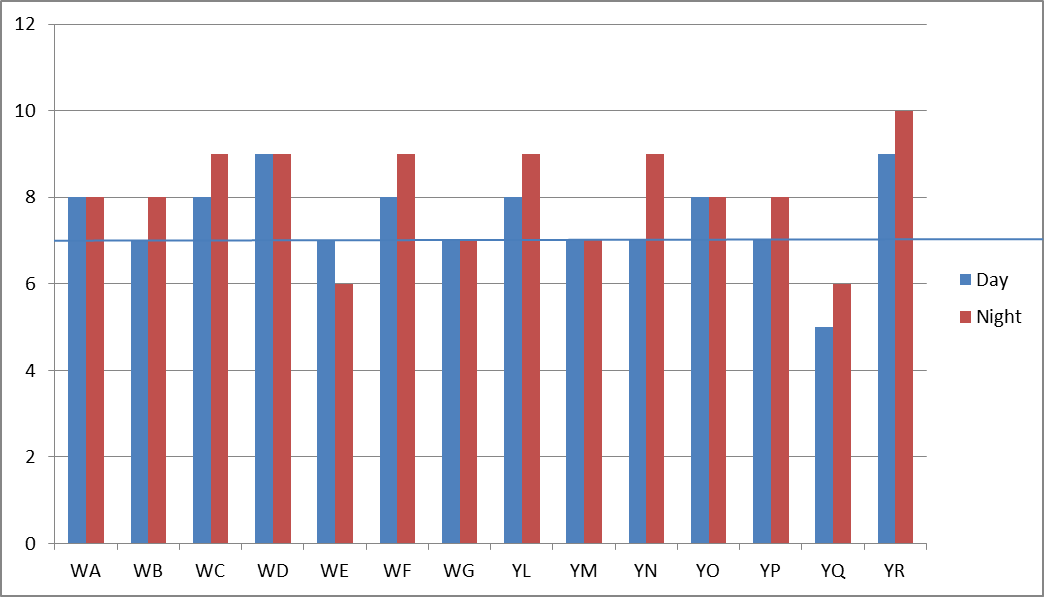
Noting that the minimum visibility level after 3 months is rated at seven, WE and YQ fail to attain the desired threshold and as such are ruled out as unsuitable. Based on minimum visibility levels recorded, YR ranks highest followed by WD, WC, WF, YL, WA, YO, WB, YP, and YM in descending order.
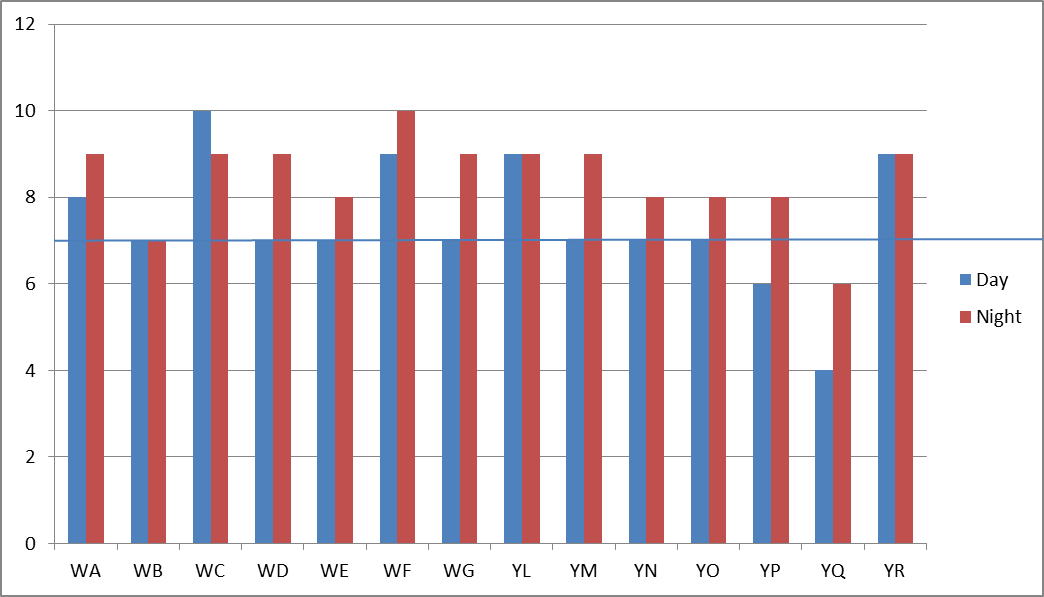
After six months, YQ and YP fail to meet the set minimum threshold standards. Like before, YR tops the list followed by WC, WF, YL, WA, WB, WE, WG, YM, YN, AND YO in descending order.
Table 2: Visibility (after six months).
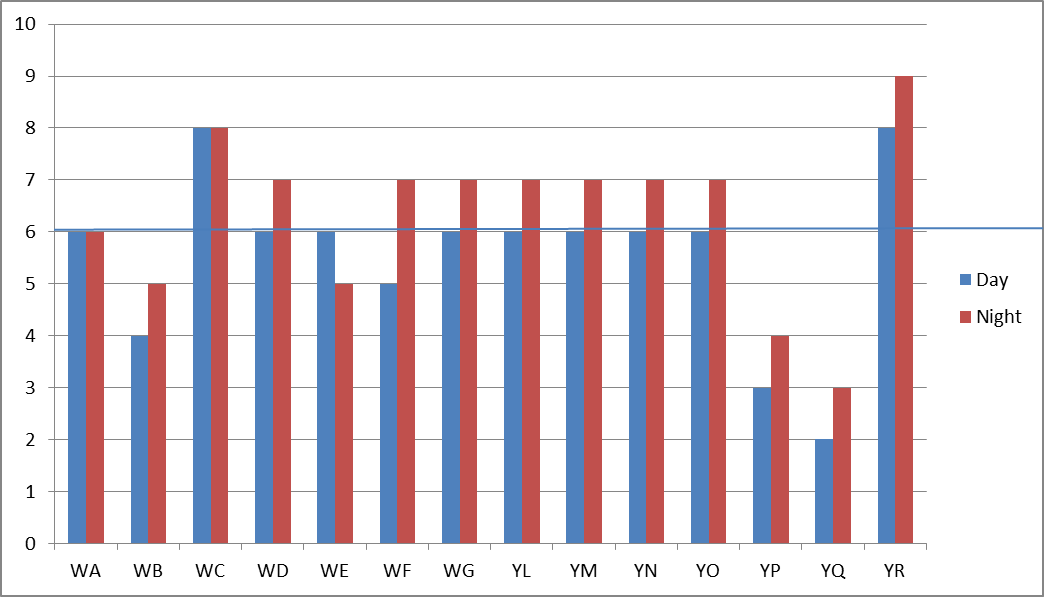
These results indicate that YR still is the best alternative followed by WC with WA, WD, WG, YL, YM, YN, and YO only managing to rich threshold limits. WB, WE, YP, and YQ fail to attain the minimum threshold limits.
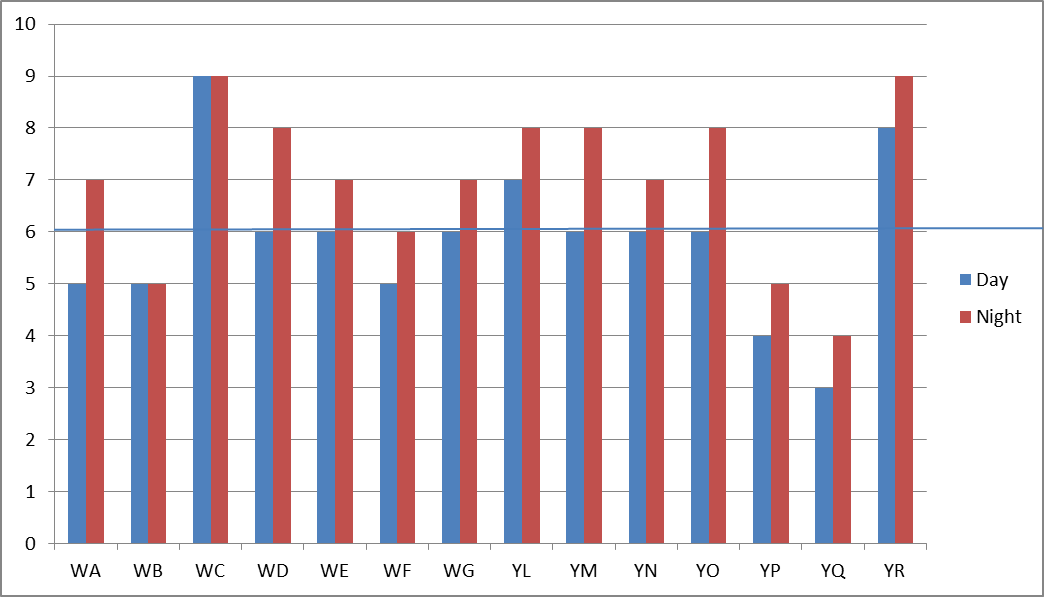
YR and WC still present outstanding results as WA, WB, WF, YP, and YQ fail to attain the minimum threshold limits.
Other than showing good visibility properties, also records a “very good” rating in terms of spraying characteristics. Others recording outstanding characteristics are WA, WB. WC. WD, WE, YL, YR.
Table 3: Spraying characteristics.
Other than YM and WB, all the other paint types dry within the desired 20 minutes duration. Noting that YR and WC have so far displayed competing capability, it’s worth looking into their drying durations. While YR takes, 15 minutes, WC takes 18 minutes making YR the preferable choice among the two. WD records the shortest drying durations.

While generally, white paints show outstanding characteristics, YR displays superb results only rivaled by WC and as such, they are recommended as the best alternatives in marking highways.